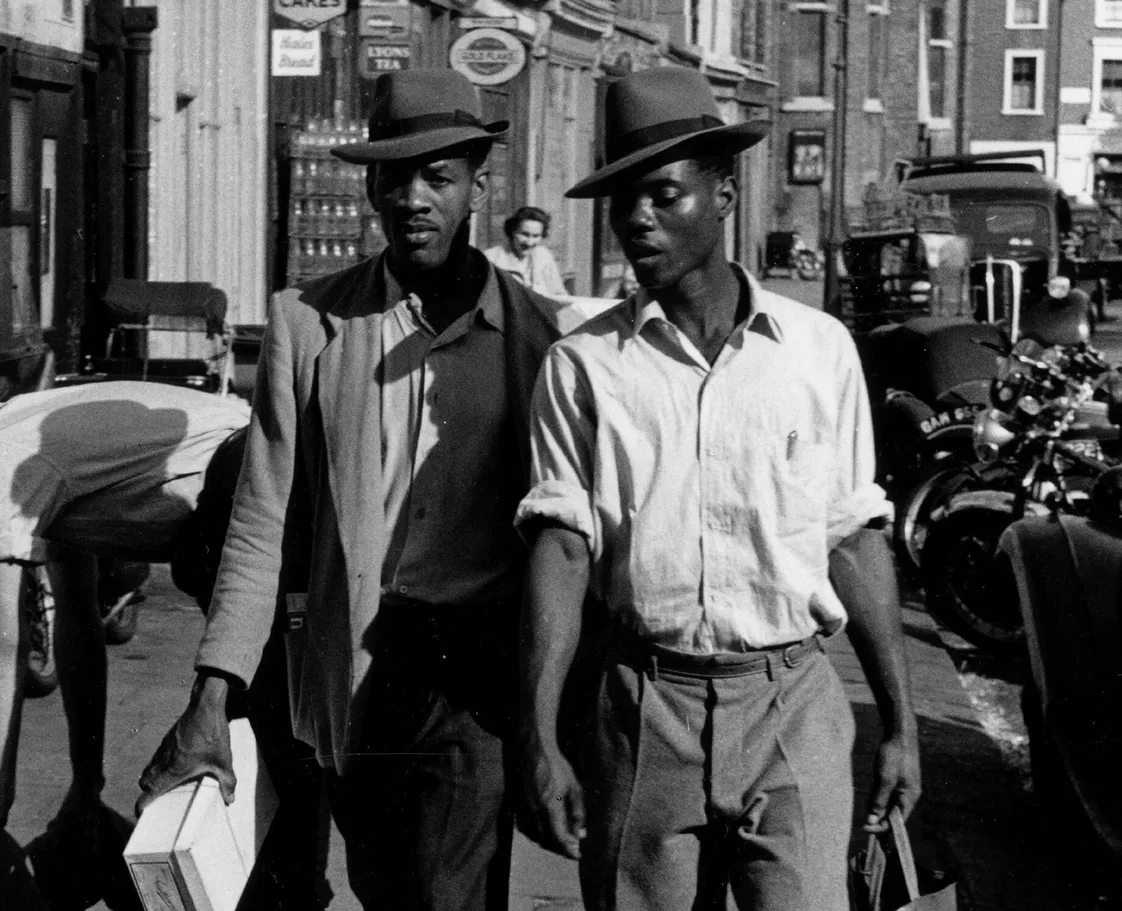22 August 2024 — By Shruti Chakraborty, Caroline Chinakwe
What does it mean to be Black in Britain today?
British-Nigerian mixed media artist Caroline Chinakwe created two artworks for London Museum Docklands. She shares her inspiration, learning and what it means to be ‘unapologetically’ Black in Britain today.
Caroline Chinakwe is making waves in the art world with her vibrant and powerful mixed-media creations. This self-taught British-Nigerian artist draws from her cross-cultural experiences, blending bold colours and intricate patterns to explore identity and culture.
With over 20 years’ experience in the fashion industry, fashion and textiles play a crucial role in telling the story of Black Britons in her artworks. Especially in the two digitally painted and collaged portraits on display at the museum’s London, Sugar & Slavery gallery.
“Art is a powerful vehicle for feeling, sharing, and healing from traumatic experiences, and for centring voices that have been historically underrepresented,” shares Jean-Francois Manicom, Senior Curator, speaking about Caroline’s works.
Here Caroline talks about how – through the characters in her pieces – she responds to the question: What does it mean to be Black in Britain today? Over to Caroline.
Capturing the diversity of Black Britain today

Let go of your past (2019) by Caroline Chinakwe. She fuses elements of her Nigerian heritage with her British upbringing into her artworks.
I was asked to make two artworks for London Museum Docklands on Black Britain today… which is for me very, very diverse.
I came to the UK when I was six years old. From where I was then to where I am now, Black Britain is a lot more united culturally – between the Americans, the Caribbeans, the Africans living here, we're a lot more united. Our cultures have really merged and we really influence each other.
“‘Unapologetic’ means we don't need to apologise for who we are”
As I interviewed people for my artwork project, one word kept coming up over and over: ‘unapologetic’. This resonated deeply with me and encapsulated an important shift I was seeing in the Black British community.
"Unapologetic" means we don't need to apologise for who we are – for our colour, our hair, the way we dress, or the way we speak. As Black women especially, we're often judged constantly. Raise your voice slightly and you’re seen as aggressive. Wear your hair in certain styles and you're labelled "too tribal”. But now, we’re in a place where we just don't care anymore.
This unapologetic attitude was reflected in the overwhelmingly positive responses I got from interviewees. People spoke with hope, strength and confidence about who they are as human beings, beyond just their race.

Caroline Chinakwe surrounded by her artworks in her studio in London.
What I learned about Black British history
During my research, I was taken aback by how the Caribbean community was treated when they first arrived in the UK. They came dressed to fit in. They came very, very Western. And they came here probably expecting to be welcomed, but it wasn’t the case. Many were doctors, nurses, and teachers in the Caribbean, but had to start from the bottom in the UK, often living in homes unfit for animals. Yet, these people had to make it their home.
I also delved into the history of the Windrush generation, which, as an African, I didn't know much about previously. It's not taught in schools, which is a significant oversight in British education. Growing up in the UK, I studied Hitler, the Second World War and the Blitz in school, but nothing was taught about Black history.
I also explored the Victorian era, discovering figures like Sarah Forbes Bonetta – a slave African princess who grew up with Queen Victoria. These hidden histories deepened my understanding of our long, complex relationship with British society and culture.
Symbolism, roots and modernity of the Black British story
The first artwork I created, His Lived Experience, has a handsome Black man from the Caribbean wearing a suit and hat. This was inspired by images I saw of men coming off the boats, dressed in their finest to fit into society. The mask he wears symbolises someone trying to fit in, with flowers representing a subtle reference to conforming, but not as strongly as in the past.
I wanted to use African-inspired prints that I designed myself. So, although he's a British, he's a Caribbean man coming to Britain.
The second image, This is Us, has four characters, each representing different aspects of Black British identity. To the left is a mixed-race woman, wearing a Victorian dress and an African head wrap. In front of her is an African man, inspired by the character Okonkwo in Chinua Achebe’s Things Fall Apart, reminding us of our past struggles and strength. Then you have a modern influencer wearing a denim jacket with rhinestone embellishments and a locket with the portrait of Queen Elizabeth. On the far right is a non-binary person, representing the LGBTQ+ struggle within the Black community.
“Each character's clothing was carefully chosen to represent different aspects of Black British history and identity”
Fashion plays a crucial role in telling our story. Each character's clothing was carefully chosen to represent different aspects of Black British history and identity. For example, the influencer wears a Jamaican bandana of Madras fabric, symbolising Caribbean heritage, while sporting an American baseball cap and African head wrap.
In the background are William Morris-inspired wallpapers. It’s a very British statement symbolising the aristocratic elite world, where the characters are all fit in.
Inspiring reflection and appreciation
Creating these two pieces was a huge responsibility – of really representing my community. I want them to feel seen and portrayed in all their diversity. People may criticise, judge and may not understand it, but I'm hoping that people really see it and question things, and learn from it.
For the museum visitors, who might be non-Blacks, I hope that they too will look at our journey and reflect on how far we've come and how powerful we are as a race. Because I don't think any other race has been through what the Black race has been through and what we're still going through today. I want them to recognise the influences we’ve made on the world and understand the ongoing struggles we face. Through my art, I aim to show the strength, diversity and resilience of Black Britain today.
Edited excerpts from an interview with Shruti Chakraborty (Digital Editor, Content, at London Museum). Caroline Chinakwe’s artworks His Lived Experience and This is Us are on display at the free London, Sugar & Slavery gallery at London Museum Docklands.











